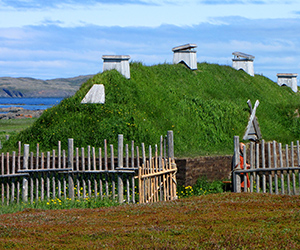CANADA HISTORY - Elections
Conservative Party of Canada

The Conservative Party of Canada and its predecessor, the Progressive Conservative Party of Canada, have deep roots in Canadian political history, tracing their origins back to the founding of the country in 1867. The original Conservative Party was formed under the leadership of Sir John A. Macdonald, Canada’s first Prime Minister and one of the key architects of Confederation. Macdonald’s vision for the party was built around a strong central government, the expansion of the nation through the construction of the Canadian Pacific Railway, and the maintenance of close ties to the British Empire. The early Conservative Party was instrumental in the creation of the Canadian state, and Macdonald's leadership was marked by his emphasis on nation-building, including the establishment of national institutions and policies that would help unify the vast and diverse territories that made up Canada.
In the late 19th and early 20th centuries, the Conservative Party oscillated between power and opposition, often competing against the Liberal Party for dominance in Canadian politics. Throughout its early history, the Conservative Party maintained a platform of traditionalism, economic protectionism, and support for the British Empire. One of its core policies was the promotion of tariff protection for Canadian industries, a stance that aimed to protect domestic manufacturers from foreign competition, particularly from the United States. This protectionist stance helped the party maintain strong support in parts of Canada where industry and manufacturing were central to the economy. However, the party’s fortunes began to decline in the early 20th century, as it struggled to appeal to a changing electorate and address the new social and economic issues of the time.
In 1942, the Conservative Party underwent a significant transformation when it merged with elements of the Progressive Party, a group that represented the interests of Western Canadian farmers. This merger led to the formation of the Progressive Conservative Party of Canada (PC), a name that would be retained for the next five decades. The union of these two political traditions was an attempt to broaden the party’s appeal, particularly in the West, where the Progressive movement had gained significant support during the 1920s and 1930s. Under its new name, the Progressive Conservative Party sought to balance its traditional conservative values with a more modern, populist approach that could address the concerns of farmers, workers, and the middle class.
The Progressive Conservative Party’s fortunes improved significantly under the leadership of John Diefenbaker, who became Prime Minister in 1957. Diefenbaker’s government was known for its populist appeal and its emphasis on Canadian nationalism. He introduced several important policies, including the Canadian Bill of Rights, the first federal law to protect human rights in Canada, and promoted the idea of a “Northern Vision,” which aimed to develop Canada’s northern territories and enhance the country's sovereignty. Diefenbaker’s tenure, however, was marked by political and economic challenges, including his controversial decision to cancel the Avro Arrow jet fighter project, which led to job losses and criticism of his government’s handling of defense and economic policy. Despite a strong start, Diefenbaker’s government was defeated in 1963, and the Progressive Conservatives returned to opposition.
One of the party’s most significant leaders was Brian Mulroney, who served as Prime Minister from 1984 to 1993. Mulroney’s government was marked by significant political and economic reforms that reshaped the Canadian landscape. His most notable achievement was the negotiation of the Canada-United States Free Trade Agreement (FTA) in 1987, which later expanded into the North American Free Trade Agreement (NAFTA) in 1994, including Mexico. These agreements marked a shift away from the party’s traditional protectionist stance toward a policy of free trade, which Mulroney argued was essential for Canada's economic growth in an increasingly globalized world. Mulroney’s government also introduced the Goods and Services Tax (GST), a highly controversial federal consumption tax that replaced the manufacturers’ sales tax and was designed to improve government revenues and reduce the deficit.
Mulroney’s leadership, however, was not without controversy. His efforts to address the issue of Quebec's status within Canada through the Meech Lake Accord and the Charlottetown Accord both failed, leading to a rise in Quebec separatism and contributing to the resurgence of the Bloc Québécois. The latter years of Mulroney’s tenure were marked by growing unpopularity due to economic recession, high unemployment, and dissatisfaction with the GST and other government policies. By the time Mulroney resigned in 1993, the Progressive Conservatives were deeply unpopular, and in the subsequent federal election, the party suffered a historic defeat, winning only two seats under the leadership of Kim Campbell, Canada's first female Prime Minister.
The collapse of the Progressive Conservative Party in 1993 set the stage for significant realignment on the right of the Canadian political spectrum. In the 1990s, conservative forces were divided between the Progressive Conservatives and the Reform Party, a Western-based party led by Preston Manning that advocated for smaller government, fiscal conservatism, and democratic reform. The Reform Party was particularly critical of the Progressive Conservatives' legacy under Mulroney and sought to present a more populist, grassroots conservative alternative. The division between these two parties split the conservative vote and allowed the Liberals, under Jean Chrétien, to dominate Canadian federal politics throughout the 1990s.
By the early 2000s, it became clear that a united conservative movement was needed to challenge the Liberals effectively. In 2003, the Progressive Conservative Party and the Canadian Alliance (the successor to the Reform Party) merged to form the Conservative Party of Canada. This merger was brokered by Stephen Harper, the leader of the Canadian Alliance, and Peter MacKay, the leader of the Progressive Conservatives. The newly formed Conservative Party aimed to unite fiscal conservatives, social conservatives, and populists under a single banner. Stephen Harper was elected as the party’s first leader and, in the 2006 federal election, led the Conservatives to victory, becoming Prime Minister of Canada.
Harper’s government, which lasted from 2006 to 2015, was characterized by a focus on fiscal conservatism, law and order, and a strong pro-business agenda. Harper reduced taxes, including lowering the GST, implemented a more assertive foreign policy, particularly in support of Israel and against Russian aggression, and emphasized the need for economic stability following the 2008 global financial crisis. His government also expanded the role of the Canadian military, including participation in the war in Afghanistan. However, Harper’s government faced criticism for its environmental policies, particularly its withdrawal from the Kyoto Protocol, and for its perceived centralization of power in the Prime Minister’s Office. Despite these criticisms, Harper won three consecutive elections and served as Prime Minister for nearly a decade.
The Conservative Party’s fortunes changed in the 2015 federal election, when Harper was defeated by the Liberal Party under Justin Trudeau, who ran on a platform of progressive values, middle-class tax cuts, and a focus on environmental policies. After Harper’s resignation, the party entered a period of leadership transition, electing Andrew Scheer as leader in 2017. Scheer led the party in the 2019 federal election, in which the Conservatives won the popular vote but failed to secure enough seats to form a government. Internal divisions and questions about Scheer’s leadership led to his resignation, and in 2020, Erin O’Toole was elected leader. O’Toole sought to modernize the party’s image, moving it toward the political center, but faced challenges in uniting the party’s traditional base with more moderate voters.
In the 2021 federal election, O’Toole’s Conservatives again won the popular vote but were unable to unseat the Liberals, leading to questions about the party’s direction. O’Toole was replaced in 2022 by Pierre Poilievre, a longtime Conservative MP known for his populist rhetoric and emphasis on economic freedom, reducing inflation, and opposition to carbon taxes. Poilievre’s leadership signals a potential shift back toward a more populist and right-leaning agenda, as he seeks to consolidate conservative support across the country.
Today, the Conservative Party of Canada continues to be a dominant force in Canadian politics, offering a platform that emphasizes fiscal responsibility, economic growth, and individual freedoms. The party remains committed to lower taxes, balanced budgets, and smaller government, while also addressing concerns about inflation, housing affordability, and the economy. It faces ongoing challenges in appealing to urban voters and addressing issues such as climate change, where its policies have been critiqued. Nevertheless, the Conservative Party remains the primary alternative to the Liberal Party and continues to play a critical role in shaping Canada's political landscape.
Cite Article : Reference: www.canadahistory.com/sections/documents/documents.html
Source: NA



